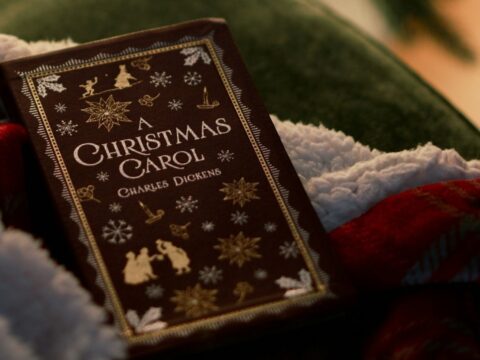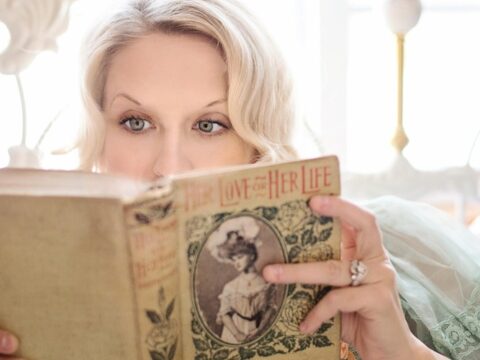I’ve mentioned before that the Twelve Dancing Princesses is on my top ten list of favorite fairy tales. And there are many reasons why. I grew up watching Shelley Duvall’s Faerie Tale Theatre and loved her charming adaptation of this story. Beyond that, many elements of this tale have always intrigued me. Twelve princesses all in the same family? A mystery of dancing shoes that wear out overnight every night? A brave suitor with an invisibility cloak? A clandestine ball at an underground castle? Truly, what’s not to love?
But the Original Twelve Dancing Princesses Is Also . . . Odd
I’m not sure how else to describe it. There are many versions of this story, and I hadn’t read any of the original fairy tales until now. My first impression? This story is unusual. Fairy tales are known for being quite straightforward with a clear villain, a hero, and a moral of the story. But Twelve Dancing Princesses is murky on all three accounts. What is this story telling us? And who exactly are we supposed to be rooting for or against?
To get to the bottom of the many conflicting opinions of this fairy tale, let’s dive into the two most famous versions: the Grimm Brothers’ “The Shoes that Were Danced to Pieces” and the Flemish version (from France and Belgium) recorded in Andrew Lang’s Red Fairy Book. This second tale is where the title “The Twelve Dancing Princesses” originated, but let’s start with the Grimms since their version is way shorter.
A Royal Family with a Shoe Problem
This fairy tale starts with a king and his twelve daughters. And yes, these twelve princesses are all sprung from the same parents. Here’s hoping there’s a couple sets of twins in there. Along with the unusual number of princesses, they also have quite unusual sleeping arrangements. All twelve princesses bunk in the same room together, and every night the king locks his daughters in their room. There’s no mention of why exactly this ritual began (overprotective much, dude?), but every morning when the king unbolts the doors, all twelve daughters’ dancing slippers are worn out, completely falling apart from dancing. Every day they receive new slippers. Every morning the shoes are worn through.
Lest you think that this is the most fantastical part of this story, let me set the record straight. Dancing slippers are not like regular shoes. They’re often made of delicate materials like soft leather, suede, and satin to allow for feet to glide freely. So they do wear out fast. On the feet of a professional dancer, it’s possible for ballet pointe shoes to wear out in just one performance.
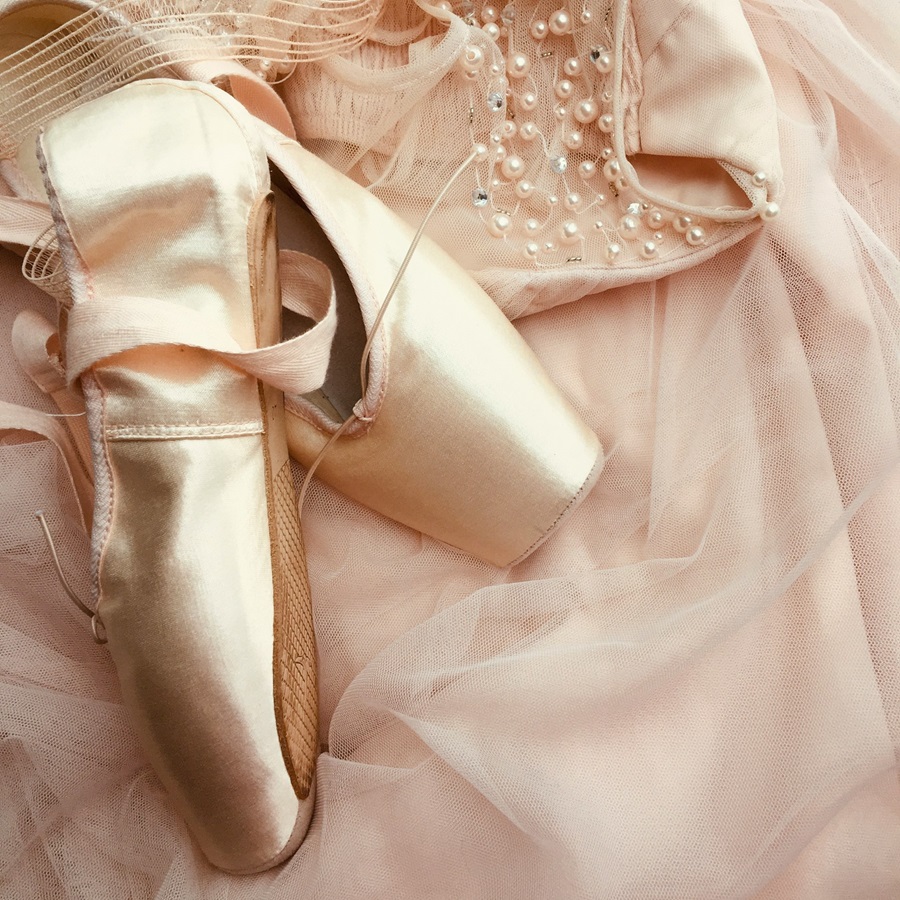
But back to the twelve dancing princesses, the king is beside himself to figure out how his daughters are wearing out all these shoes so fast. The princesses are never seen sneaking out, and no one hears a sound from their locked room at night.
The King Enlists Help to Solve the Mystery—with High Stakes
Whoever can figure out where the princesses dance all night long can marry whichever princess he chooses AND become the heir to the throne. But any suitor who can’t solve it in three days? Off with his head! You would think that with stakes like these the princesses might come forward and tell Daddy what’s been going on. But nope. The girls’ lips are sealed. Many suitors try their luck at the mystery, and all end up with their heads chopped off.
This grisly pattern continues until a poor wounded soldier comes to town and muses that he might try his hand at the king’s mystery. Lucky for him, he gets some help from an old woman. There’s no mention in the text if this lady is a witch or a fairy, but she gives the soldier an invisibility cloak and advises him not to drink the wine at the palace. This advice ends up saving his life.
These Princesses Are Sneaky In More Ways Than One
After the king welcomes the soldier, he’s taken to spend his first night in the bedchamber adjoined to the princesses’ room. Once again, I’m scratching my head that this king, who literally keeps his daughters under lock and key at night, would allow such intimate access to the princesses. Seems like a plot hole . . . But before the soldier heads to bed, the oldest princess offers him some wine. Remembering the old woman’s warning, the soldier only pretends to drink the wine as he pours it into a sponge tied under his chin. Clever, clever.
While the soldier pretends to snore, the princesses scamper about, dressing themselves up and excited for a night of dancing. It becomes clear in their dialogue that the oldest princess drugged the other suitors with sleeping potion, which is pretty dark if you think about it. But once all the princesses are ready in their gowns and jewels, they head down a secret entrance under the oldest princess’s bed. The soldier dons his invisibility cloak and follows.
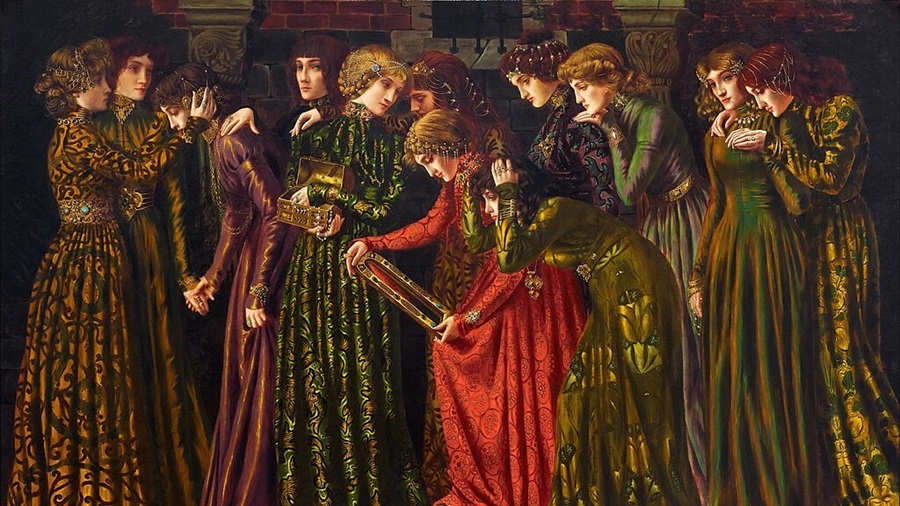
Underground Is an Entire Magical Kingdom
The invisible soldier follows the princesses through a forest of silver trees, then trees made of gold, and lastly diamond. They reach a lake where twelve boats rowed by twelve handsome princes ferry the princesses to a bright castle where the twelve couples dance and drink the night away. The soldier is there for the whole event, taking every opportunity to mess with the princesses by drinking up their wine as they’re lifting their glasses to their lips.
This rocking party lasts until three in the morning when the princesses’ shoes are so battered that they can’t dance anymore. The princes ferry the girls back across the lake to say goodbye, and the soldier races ahead so he’s snoring in his bed by the time the exhausted girls return. They drop into bed too, fooled into thinking that he saw nothing.
These events repeat themselves three nights in a row as the invisible soldier accompanies the princesses to their midnight soirées. He’s smart enough to gather twigs from the silver, gold, and diamond trees, as well as a goblet from the party. When the king demands where his daughters go, the soldier tells him everything and presents the evidence as proof. The princesses are gobsmacked that he actually followed them, but they can’t deny anything.
The Soldier Receives Everything He Was Promised
Now the heir of the kingdom, the soldier gets his pick of princesses. He chooses to marry the eldest since “I myself am no longer young.” Not the most romantic of sentiments, but he does have a point. Before the fairy tale ends, the Grimms tack on this last fascinating little detail: “But the princes had as many days added to their curse as they had spent nights dancing with the twelve princesses.”
This is the only place in the text that mentions a curse, and it really makes me wonder if the princesses were also under a spell. Were they choosing not to tell their father what was going on? Or was there a more sinister reason why they danced every night? There are details of the girls’ excitement for their nights out, but that doesn’t mean that they weren’t under some kind of magical duress. Dancing all night long until your shoes fall apart sure sounds like a curse to me, even if you are a princess who can sleep until noon.

But What about the Flemish Version of the Twelve Dancing Princesses?
The Flemish fairy tale is both more detailed than the Grimms and far more romantic. Here, the male protagonist is a cow-boy named Michael who comes to the castle to work for the gardener. The royal patriarch with twelve daughters who wear out their shoes each night is a Duke in this case. Although Michael is interested in solving the Duke’s mystery, he observes the princesses from afar rather than throwing his hat in the ring. And he quickly falls for the youngest princess named Lina.
Another departure from the Grimm Brothers is how Michael becomes invisible. Throughout the story he receives magical advice from some kind of fairy who appears in his dreams. She gives him two magical laurel trees that can grant wishes to whoever cares for them. When Michael wishes for the ability to be invisible, the trees give him a magical white flower to wear in his buttonhole instead of a cloak. Invisible Michael sneaks up to the princesses’ chambers and hides under one of the twelve beds. No attached room required.
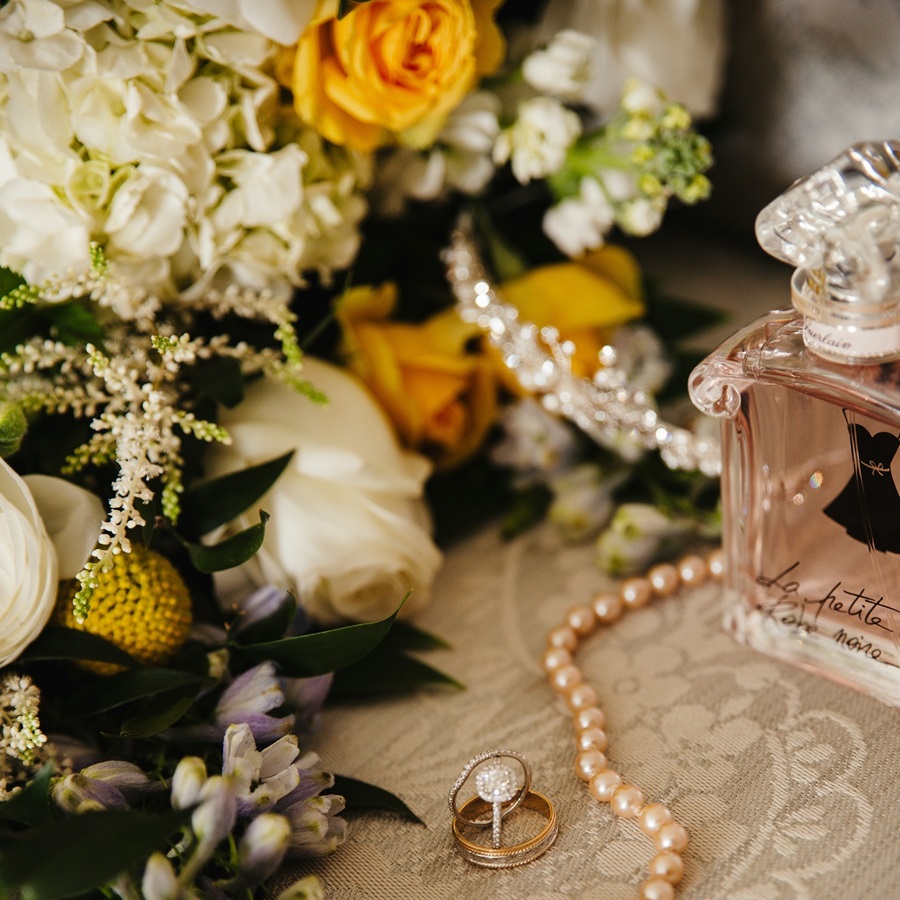
The Midnight Ball Is Far More Glamorous in this Version Too
This version also has silver, gold, and diamond trees and a lake for the princesses to cross. But once they’re in the castle, the text takes its time describing the opulence of the ballroom, how much the princesses love to dance, and Lina’s radiant beauty. Michael is all kinds of jealous watching the princes dance with his crush, but the text also mentions that these are the same suitors who failed to discover the princesses’ secret. They’re now cursed to dance here forever after the girls offered them drinks from this underground land.
That last detail is particularly interesting. The text also describes the sumptuous banquet the princesses eat each night after they’ve danced their shoes ragged. It’s possible that this is a Persephone situation à la Greek Mythology. Eating a pomegranate seed from the Underworld was the fatal mistake that bound Persephone to Hades forever. Not to get into the weeds, but this version of the Twelve Dancing Princesses makes me wonder more than ever if the princesses are compelled to return every night after eating the enchanted food . . .
Another Change: The Big Climax Happens at the Ball
While the soldier takes his knowledge straight to the king, Michael is discreet with the princesses’ secret. Instead of tattling on the girls, he lets Lina know that he knows. She’s unsure what to think of the boy’s silence, but the second her eleven sisters find out, they’re making plans to throw Michael in a dungeon or force him to drink the magic wine at the ball. The princesses confront Michael, demanding that he attend the ball as a real suitor, no invisibility this time. He accepts this invitation without a fight and asks the magic laurel trees to dress him like a prince.
Michael dances at the midnight ball with all the princesses, including his beloved Lina. Just as her sisters are about to offer Michael the enchanted drink, Lina intervenes, shouting that she’d rather marry a gardener than see any harm come to him. Michael falls at her feet, proclaiming his love. When the other eleven princesses also choose husbands from amongst the doomed princes, “the charm was broken.” There’s no explanation if this charm is the princes’ curse, the princesses’ obsession with dancing, or the very existence of this magical world. Maybe all of the above.
Once the twelve couples return to the world above, Michael tells the king that he’s solved the mystery. Then Michael reveals his magic laurel trees to Lina when she asks him how he made himself invisible. The story ends when Lina chops down the laurels and burns them since they “gave him too much advantage over his wife.” An interesting place to end . . .
So. What Is this Fairy Tale Actually About?
There are so many conflicting interpretations of this story. Many analysts read it as a story of men intruding on female independence, first by locking them up and then spying on them. Finally the princesses’ nightly larks end altogether once they’re shackled into arranged marriages. It’s no wonder why feminists hate this story with a passion, and I can definitely see how the Grimm version can be read that way.
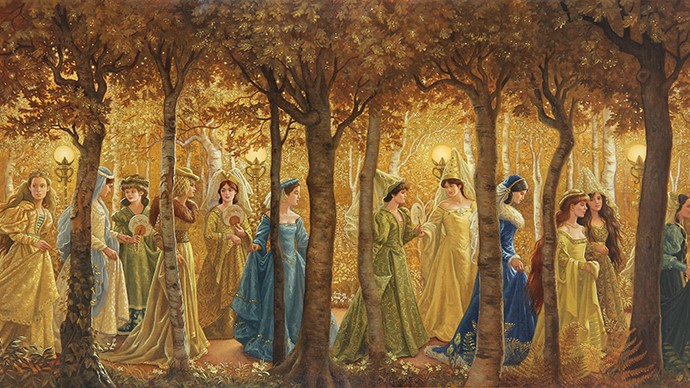
At the same time, there are multiple elements in this story that make me believe there’s more going on here than men overpowering women. First and foremost, we have to discuss the princesses as a group and their function in the story.
Sisterly Joy and Questionable Agency
Despite how ridiculous it is to imagine TWELVE GIRLS in one family, one of the things I love most about this story is the female comradery in this band of sisters. It’s a running theme in all the versions that these girls look out for each other. Regardless of how or why they started descending to these balls, they clearly enjoy embracing their femininity, donning beautiful dresses, and attending these mysterious, glittering parties.
And there’s no question that the princesses look out for each other. The youngest princess gets the worst treatment in both versions as her sisters dismiss her for hearing the invisible soldier and tease her for being sweet on the gardener boy. But it’s also clear that the sisters are in this together. Even if they are under a curse, it seems like they’re making the most out of dancing holes in their shoes every single night.
At the same time, I can understand why some see the princesses as the villains. It’s easy to see their nightly dancing as an embodiment of excess and vanity. And they seem truly cold over the fact that young men are dying or cursed forever. Especially when these tragedies could be prevented if the girls just told their father the truth. In the Grimm version, the princesses literally laugh over the snoring soldier. It makes me wonder if the girls under a spell that makes them willing to do whatever it takes to continue dancing. Because despite their callousness, I find it hard to believe that the princesses are meant to be the villains of this story . . .
First and Foremost, the Twelve Dancing Princesses Are Being Infantilized
Both versions establish from the beginning that these twelve girls all sleep in one room with twelve beds. That detail alone strikes me as incredibly odd. TWELVE young women in the same room? Really? The king can’t be bothered to give his daughters at least three rooms in this huge castle? But this is one of many textual clues that these princesses are being forced to remain little girls. All of them bunking together in one room sounds like they were raised in one nursery and just never moved out.
And that’s not even mentioning their bolted door. I see a lot of parallels between this fairy tale and Rapunzel. Both are examples of a controlling parent choosing to imprison their female offspring rather than risk their daughters making choices for themselves. Just like the witch’s tower leads Rapunzel straight into the arms of the first man she meets, the king’s overprotectiveness seems to push the twelve dancing princesses to rebel. Or perhaps the unnaturalness of their infantile sleeping arrangements is what makes them vulnerable to dark magic.
Because Let’s Be Clear: They’re Dancing in the Underworld
The twelve dancing princesses literally descend underground to reach the ball and are ferried across a body of water. These elements strike me as far too similar to descending into Hades and crossing the River Styx with the help of Charon, the deathly ferryman.
These parallels are even stronger in tandem with the three forests. The silver, gold, and diamond trees in both versions of the story bear a striking resemblance to the brightness of summer, the golden colors of fall, and the ice of winter. Each night the girls go to the ball, they’re basically passing through time and death to get there. Maybe their nightly dancing sessions defy time itself, which would explain why their shoes wear out so quickly. Exactly how long are they dancing each night?
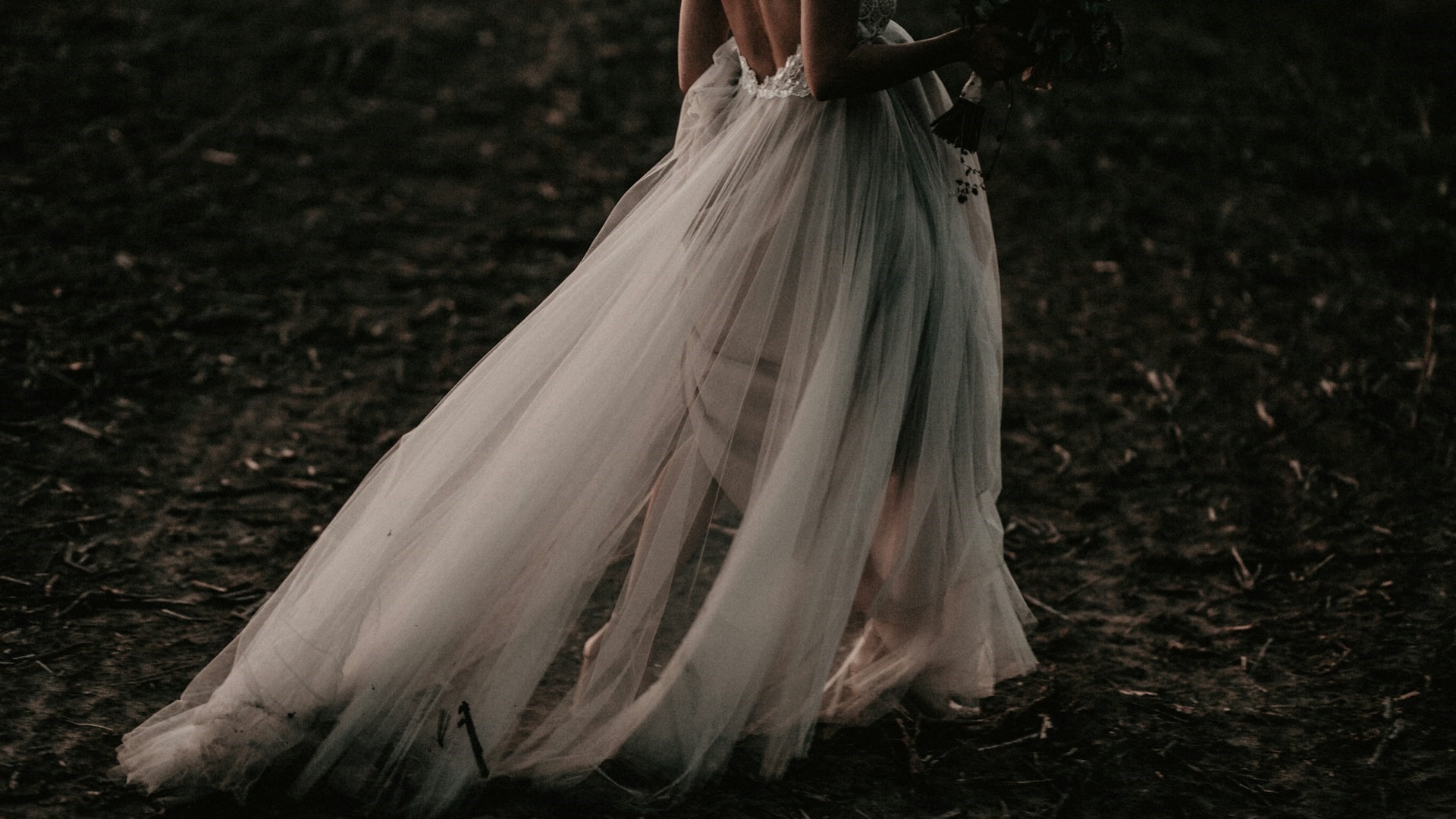
The uncanniness of it all adds an atmosphere of foreboding to this tale. It’s really no wonder that so many modern retellings of this fairy tale highlight the cursed nature of these midnight balls—and sometimes have the princesses dancing with demons. So no, I don’t think the girls are just having a grand old time dancing the night away. They could just be young women desperate for a taste of freedom, but I find it much more likely that they are damsels in distress. So no, I don’t think the soldier or Michael are just stick-in-the-mud men taking the princesses’ fun away.
On that Subject, I Also Don’t Think the Final Marriages Were a Punishment
Feminists tend to sneer at fairy tales that end with a marriage. Personally? I think this perspective is kind of missing the point. Women falling in love, marrying, and bearing children is a traditional path for a reason, hence why it shows up in stories so much. These princesses certainly enjoy dancing with men every night, which speaks volumes of how much they wish to move out of the nursery and on to the next stage. As long as it’s with the right man of course.
The Flemish version of the Twelve Dancing Princesses highlights this since all twelve princesses end up married to men of their choice. Lina especially ends up with quite a catch who is willing to keep her secrets and utterly enamored with her from the moment they meet. The text doesn’t mention how Michael feels about losing his magic laurel trees, but I do think it’s a power move that the story ends with this last choice Lina makes.
The Grimm version doesn’t give the princesses much agency, but I still think their nightly dances were a testament of how much they yearned for someone worthy of them. And for the record, the soldier and the oldest princess do seem perfect for each other. We can debate the morality of her drugging the suitors, but we know for sure that the eldest princess is witty and loves a good time. What do we know about the soldier? He’s also witty (remember that trick with the sponge?) AND he appears to have a playful streak in him as testified by his antics while invisible. Arranged marriage or not, I think he and the princess are actually quite a good match.
Which Version Do I Prefer?
Well, I am a sucker for romance, so I probably lean toward the Flemish version filled with stolen glances between the velvet-eyed Lina and her handsome beau. It’s also easier to believe that the princesses were under a spell in that version. Also slightly more palatable that none of the suitors actually died, though I can appreciate a Grimm fairy tale with a high body count just because. And Underworld or not, I will always love the underground magical world the princesses journey to each night. It’s a hugely appealing part of this story.
But let’s have a moment of silence for the local cobblers who lost all their business for royal dancing shoes after the spell breaks. I hope they didn’t go out of business as a result. ❧



